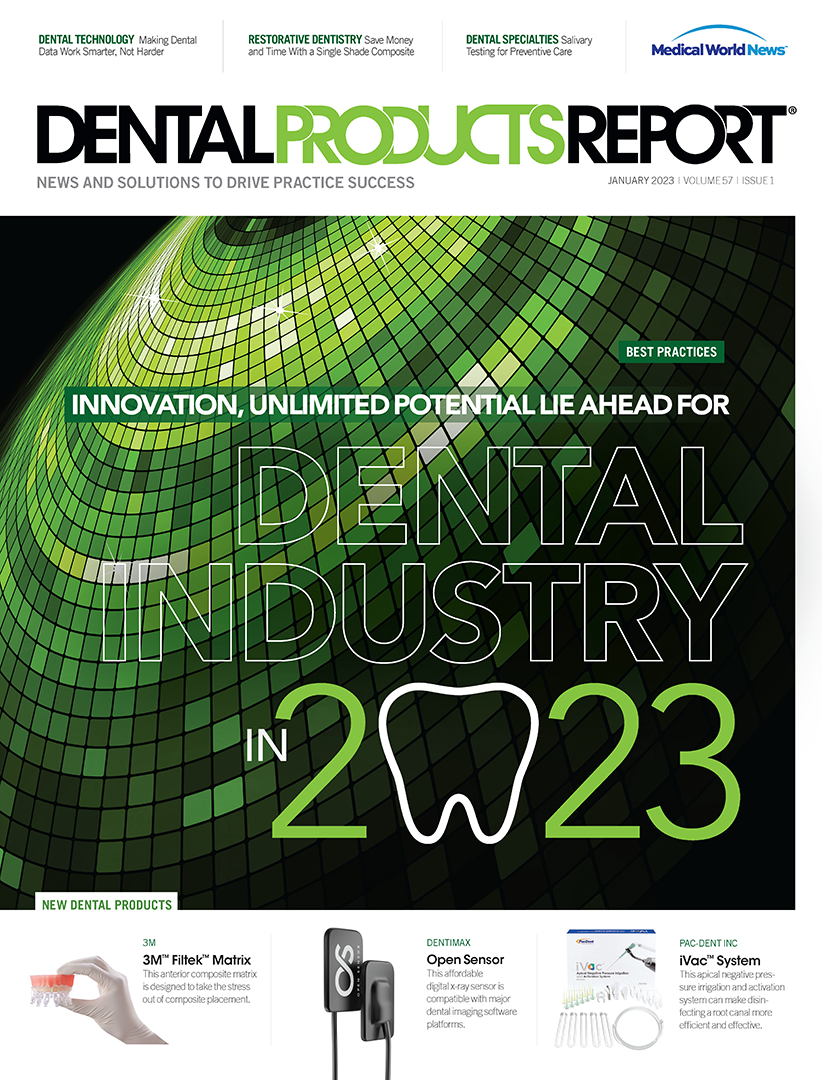About Catapult
About Catapult
Catapult is an organization that consists of more than 50 clinicians spread throughout Canada and the United States. As a company, manufacturers pay a fee for their product to be evaluated and what we deliver are truthful, independent answers from surveys that we develop with them. We have had many products that have either had to be altered before hitting the market or simply never arrived because of our openly honest evaluations. In this way, Catapult assists the manufacturer to avoid potentially releasing a faulty product, or simply a product that needs refinement. Lastly, our clients are omnipresent in the industry, small to large, with no favoritism, simply reviewing the latest products in our practices.
Ask any restorative dentist to list their biggest pain points or clinical challenges and, without fail, tissue management for successful final impressions rises to the top of the list. No other procedure in dentistry correlates more directly to outcome quality, and yet no new or elegant solutions for controlling bleeding and moving cervical tissue away from the prepared margin have emerged for quite some time. Until now, that is. The evaluators at Catapult Education were asked to test VOCO Retraction Paste, a novel product from VOCO America.
Historically, practitioners would stop bleeding and retract tissue using either hemostatic agents plus retraction cord or electrosurgery to cauterize bleeding capillaries and cut away cervical tissue blocking impression material from margins. Although electrosurgery units are still sold and used by some traditionalists, they have largely been replaced by diode lasers that are more precise, significantly reduce thermal damage to tissues, and improve patient comfort both during and after the procedure. I am a big fan of diode lasers and use them regularly, but I believe their utility goes far beyond tissue troughing for impressions. I use a laser to eliminate tissue that I prefer be removed and materials that offer temporary retraction of the healthy tissue that I prefer to keep. Retraction cord has served the profession reliably for countless years. Various iterations, including braided and knitted cord, have been developed, each with different handling properties. Cord is used in tandem with a number of hemostatic solutions. Because epinephrine-impregnated cord has fallen out of favor due to potential adverse cardiac effects, aluminum chloride and ferric sulfate have become the most commonly used hemostatic solutions.
Despite the efficacy of cord, doctors continue to look for alternatives for a variety of reasons. Cord packing is considered time-consuming, even for expert practitioners (2-cord technique, by definition, takes twice as long). Overzealous packing in fragile biotypes can lead to unwanted recession. Given a choice, most patients would prefer not to have cord jammed into their sulcus and avoid the reinforced anesthesia that is sometimes needed. Liquid hemostatic solutions show mixed efficacy (aluminum chloride is typically less effective than ferric sulfate), have an unpleasant taste, and can irritate soft tissues. Although ferric sulfate provides more predictable hemostasis than aluminum chloride, remnant ferric ions that are not cleansed away and remain embedded in dentin tubules can lead to progressive creeping stain that becomes visible through ceramic restorations, rendering them an esthetic failure over time. When manufacturers introduced cord alternatives in the form of gels and pastes, doctors were eager to try them, and I was no exception. These alternatives were met with mixed reviews. The consensus was that they were marginally effective and, as such, a convenient alternative for cases in which bleeding was not a significant problem and margins were not placed too far below the gingiva so that significant tissue displacement was not required. In due course, many doctors found their way back to cord or laser troughing strategies.
Although VOCO Retraction Paste falls in the category of cord alternatives, Catapult evaluators were unanimously pleased with its performance. The material characteristics and highlights are as follows:
VOCO Retraction Paste features aluminum chloride as the active hemostatic agent. But reviewers found that the formulation and tissue interaction mode resulted in far better hemostasis than they have experienced with other products containing aluminum chloride. They found it to be on par with or even more effective than ferric sulfate in some instances.
Delivery and placement of VOCO Retraction Paste was remarkably easy and efficient. First, there is no dedicated dispensing gun needed as unit-dose ampules fit into any traditional composite gun. Next, the adjustable narrow tip makes it possible to place the paste very quickly. Finally, the material can be further compressed into the sulcus using the flat aspect of a cord packer or similar instrument.
VOCO Retraction Paste features dual-phase viscosity. Upon initial dispensing, it is more fluid and flows into the sulcus under extrusion pressure. Once in place, it becomes more viscous and essentially maintains the positive retraction by occupying the expanded sulcular space. This is why the evaluators found it to be as effective as small diameter cords.
The highly visible blue of VOCO Retraction Paste made it easy to see not only during placement but afterward as well, so complete removal could be verified before beginning the impression. Removal can also be accomplished very quickly with vigorous air/water spray using the 3-way syringe and does not leave a stain on the tooth after removal.
The following clinical case highlights the use of VOCO Retraction Paste for tissue management in preparation for a digital scan.
Figure 1. Note the molar crown preparation presenting with variable margin placement, including supragingival and subgingival spans in need of hemostasis.
Figure 2. VOCO Retraction Paste was dispensed and compressed or buttered into the sulcus using the flat aspect of a cord packing instrument.
Figures 3 and 4. Top down and lateral screenshot views of the final Itero™ scan, showing a very clearly reflected and digitally pinned margin.
It’s worth mentioning that although VOCO Retraction Paste was effective for most clinical scenarios leading up to an analog elastomeric impression, it is perhaps the perfect complement to practices that have adopted digital impression technologies. In certain cases, cervical tissue that is under-retracted may result in thin or fragile flash that can tear upon removal. There is no minimal axial retraction required when capturing a margin digitally. As long as the camera can see clear delineation from surrounding tissue, the margin is accurately captured.
Because of the overwhelmingly positive reviews from Catapult Education Doctors, VOCO America was awarded a unanimous Catapult Vote of Confidence™ for its VOCO Retraction Paste.

